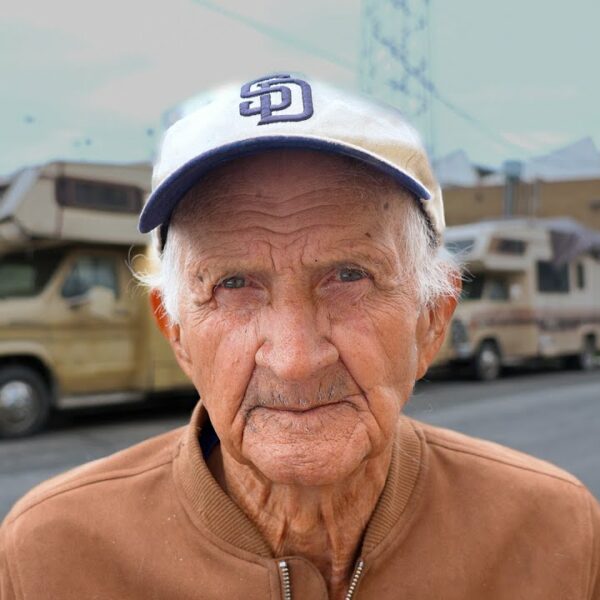Is Homelessness Worse Now than in the Past?
The face of homelessness has been altered drastically over the decades. Sometimes, it is the face of poverty or the aftermath of war. Sometimes, it is the face of innocence ripped from children’s arms or a single mother’s arms clinging tightly to her newborn child.
Homelessness has dotted the country in shantytowns. It has crept through the suburbs one sofa at a time. It has breezed through the shadows of cities and lurked behind the rolling acres of rural regions. But for all of the change that homelessness has exhibited over the years, one thing has stayed pretty much the same – the number of people enduring it.
“I got my sleeping bags, and I’ve got my jackets, and I’m just keeping warm,” explained Richard, a man who had been sleeping outside on the streets of New York City for six years when Invisible People’s camera crew caught up with him.
Richard was evicted the day after his wife died. His bout with homelessness was years of heartbreak in the making. But he is not alone.
Stories like Richard’s have prevailed in the city, as in the country, and history books. Homelessness feels like a hopeless hump, an obstacle we cannot conquer.
On any night, hundreds of thousands of people are seen visibly homeless on city streets. In a year, more than six million Americans fall victim to the system and end up enduring some form of homelessness.
How long can we keep instituting the same failed methods before we realize we’re merely building and rebuilding a stubborn brick wall? Some might observe that we are even crashing into it.
The Number of People Thrust into Homelessness Each Year Has Barely Budged for Centuries on End
The term “hobo,” now seen as a slur, was once used to describe a distinct group of transient workers. In the early 1900s, these unskilled laborers, who were nearly synonymous with railroads, could be seen hitching trains to anywhere, which was nowhere nice.
Homeless people in the 1900s often traveled by train or on foot, creating outdoor camps, which they called jungles, and causing a general sentiment of unrest in the public sphere.
The existence of hobo culture only served to make the growing American homeless problem more visible, something modern governments now work hard to avoid.
At the time, amid the Great Depression, city leaders crafted a careful narrative, directing public attention away from the economic despair causing homelessness. Instead, they placed the blame squarely on the shoulders of the homeless people themselves, who were given unfavorable nicknames like “tramps,” “wanderers,” or “bums.”
Much like today, these individuals were incorrectly accused of not wanting to work. In reality, livable wages and affordable housing were scarce. Also, like today, legislators drafted anti-homeless legislation to send poor people to paupers’ prisons and vilify them in the eyes of the public.
During the Great Depression and the Dust Bowl, millions endured the horrors of homelessness.
Conveniently, there is no clear-cut, quantifiable data to prove or disprove this. However, as witnessed by individual observers, a snapshot of visible homelessness put the number of so-called hobos in the ballpark of nearly half a million people.
Today, that same number, collected almost the same way through individual observing volunteers, is used by the Department of Housing and Urban Development as their Point-in-Time Count.
The official government tally states that approximately 582,000 people experience homelessness on any given night. This is practically identical to the number of “hobos” observed during the Great Depression and the Dust Bowl.
If anything, the number has only increased. Records provided by educational institutions and university-led studies project there are actually millions of homeless Americans each year, making the unofficial tally just as comparable as it was a hundred years ago. Here, you can see the official and unofficial data are disturbingly similar.
So what gives? Why haven’t we solved the homeless crisis in over a century of attempts? Why has the condition barely budged after more than a hundred years and with hundreds of millions of dollars spent to combat homelessness?
We’re Still Criminalizing Homelessness Rather than Solving It
The San Francisco Chronicle released an alarming timeline of homelessness through the years in San Francisco. What we see here is one city spending hundreds of millions of dollars, approximately $20 million a year to be exact, criminalizing homelessness rather than solving it.
Each time homelessness becomes more visible, homeless people are placed in prisons rather than permanent housing accommodations. Jennifer Friedenbach, the Executive Director for the Coalition on Homelessness, told reporters the standstill was merely a consequence of cash over compassion.
“It’s about money,” she explained. “We need a sustained revenue source to double the housing units for homeless people and to do prevention to keep people in their homes and not to become homeless to begin with.”
According to Friedenbach and other housing scholars who echo her sentiments, anything centered on criminality is an exercise in futility.
Talk to Your Legislators About Making a Change
We can’t keep utilizing the same insufficient tactics and expect a different result. Criminalizing homelessness merely moves the problem from one obscure section of the country to another. The cycle is vicious, ineffective, and expensive.
We have wasted hundreds of years and hundreds of millions of dollars on homelessness only to wind up right back where we started. Talk to your legislators about changing the approach and making housing a human right for all.











